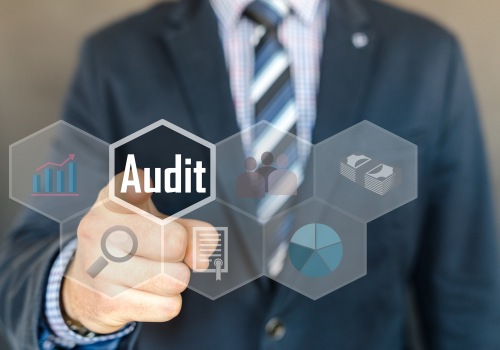Auditing is an important part of any organization's operations. It helps ensure that processes and procedures are being followed correctly, and that all financial activities are conducted in accordance with applicable laws and regulations. But audits can also be a source of risk for organizations, as they can uncover potential problems and deficiencies that need to be addressed. Identifying audit risks is an essential step in the audit process, as it allows organizations to identify areas of potential risk and develop appropriate strategies to mitigate those risks. This article will provide an overview of audit risks and discuss strategies for identifying and mitigating them.
It will explain the importance of risk assessment and discuss the different types of audit risks that may be encountered. It will also provide practical advice on how to identify audit risks, develop mitigation strategies, and implement effective risk management practices.
What is an Audit Risk?
An audit risk is a potential problem that can arise in the course of an audit. It is important to understand audit risks because they can lead to costly errors, misstatements, and other financial losses. Audit risks are usually associated with financial statement audits, where the auditor must consider numerous factors in order to provide an accurate assessment of the company's financial health. Examples of audit risks include fraud and non-compliance with laws and regulations, inaccurate information, inadequate records, and data manipulation.Fraud and non-compliance can lead to costly penalties, fines, and other financial losses. Inaccurate information can lead to incorrect decisions and financial losses. Inadequate records can lead to misstatements in the financial statements and data manipulation can lead to inaccurate information.
Types of Audit Risks
Audit risks can be broadly divided into three categories: operational, financial, and compliance risks. Each type of risk can have a significant impact on a company's bottom line and should be taken into consideration when performing an audit.Operational risks refer to any unexpected events or changes in the environment that could affect a company's operations, such as a natural disaster, changes in market conditions, or new regulations. Examples include system failures, personnel turnover, and changes in customer preferences. Financial risks involve any potential losses that may arise due to an inability to meet certain financial obligations, such as loan payments or dividend payments. Examples include the potential for bankruptcy, fraud, or liquidity issues.
Compliance risks involve the potential for an organization to fail to comply with certain laws or regulations. Examples include a failure to comply with health and safety regulations or data protection laws.
Operational
, Financial, and Compliance risks are all important to consider when performing an audit. Understanding the different types of audit risks and how they can be mitigated is essential for protecting a company's success.Examples of Successful Audit Risk Mitigation Strategies
Successful audit risk mitigation strategies vary depending on a company's goals and objectives. However, there are some common practices that can be seen in a variety of companies. For example, one risk mitigation strategy is to create a comprehensive risk management plan. Such a plan should identify potential risks and how they can be addressed.Additionally, the plan should include steps to be taken to mitigate any identified risks and how the company will respond if an incident occurs. Another successful audit risk mitigation strategy is to conduct regular internal audits. Internal audits help companies identify areas of weakness or potential areas of risk in their operations. By conducting regular internal audits, companies can ensure that their processes and procedures are up-to-date and accurate.
Companies can also mitigate audit risk by creating a culture of compliance. This means ensuring that everyone in the organization is familiar with their company's policies, procedures, and standards. Additionally, it means making sure everyone is aware of their responsibilities and following them. A culture of compliance helps to ensure that everyone within the company is aware of any potential risks and is taking proactive steps to mitigate them. Finally, companies should consider adopting a continuous auditing program.
Continuous auditing allows companies to monitor their operations on an ongoing basis and identify any areas of weakness or potential risks in real-time. By doing so, companies can quickly address any identified risks and prevent them from becoming larger issues in the future.
How to Mitigate Audit Risks
Mitigating audit risks involves implementing a number of strategies to minimize the potential for costly and damaging mistakes. One of the most effective methods is to put in place internal controls and monitoring systems. Internal controls are practices, policies, and procedures that help ensure financial accuracy, compliance with laws and regulations, and the prevention of fraud.Monitoring systems help organizations detect, prevent, and correct errors in a timely manner. For example, if an organization is auditing its accounts receivable, they should have an internal control system in place that monitors the accounts receivable process. This could involve creating a system of checks and balances to ensure accuracy and compliance with laws and regulations. It could also involve having regular reviews of accounts receivable balances to detect any errors or discrepancies. Additionally, having a system in place to detect fraud and misappropriation of funds can help an organization mitigate audit risks. Another way to mitigate audit risks is to use independent experts or audit firms to review internal processes and procedures.
An independent review can provide valuable insights into the accuracy of financial statements and help identify potential areas for improvement. It can also help identify potential risks that may not be immediately apparent. Finally, organizations should regularly review their internal control systems and monitoring systems to ensure that they are effective. This includes ensuring that the system is up-to-date with current laws and regulations, that it is properly implemented and maintained, and that any changes are implemented in a timely manner. By regularly reviewing these systems, organizations can ensure that they are mitigating audit risks effectively.
How Do You Identify Audit Risks?
Identifying Audit RisksWhen it comes to identifying audit risks, there are a few methods that can be used.The most common is conducting a risk assessment. This involves assessing the likelihood and potential impact of risks that could affect the organization. The assessment should include an analysis of any potential areas of risk, and consider the potential consequences if the risk were to occur. Another method that can be used to identify audit risks is data analysis.
Data analysis can be used to identify and understand patterns in data that could indicate areas of risk. For example, if a company has high employee turnover, this could indicate a potential area of risk that should be investigated further. In addition to these two methods, organizations may also use other forms of risk management, such as scenario planning or sensitivity analysis. Scenario planning involves creating different scenarios and assessing the potential impact of each scenario on the organization. Sensitivity analysis involves evaluating how changes in certain variables may affect the organization's operations.
Both of these methods can help identify areas of risk that may not be visible using other methods. It is important to remember that no single method is perfect for identifying audit risks; instead, it is important to use a combination of methods and to consider the potential impact of each risk. Once the risks have been identified, organizations should consider the best strategies for mitigating them. Audit risks can be costly and damaging to a company's success. Understanding the risk assessment process and the different audit risks is essential to identify and mitigate potential problems. Companies should implement an effective audit risk mitigation strategy in order to make better decisions and ensure a successful outcome.
To do this, it is important to understand the different types of audit risks, how to identify them, and the best strategies for mitigating them. Examples of successful audit risk mitigation strategies can be used as a guide for companies looking to improve their risk management. By taking the time to properly identify and mitigate audit risks, companies can reduce the risk of financial losses or other negative consequences. Companies should use the best practices from successful strategies to help them protect their assets and ensure their success.







